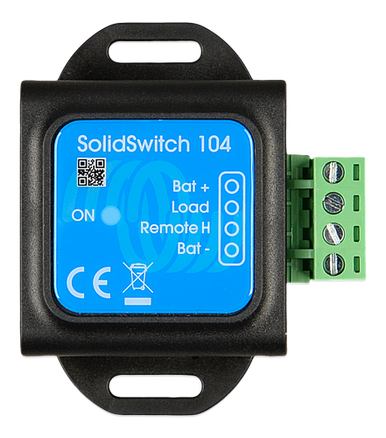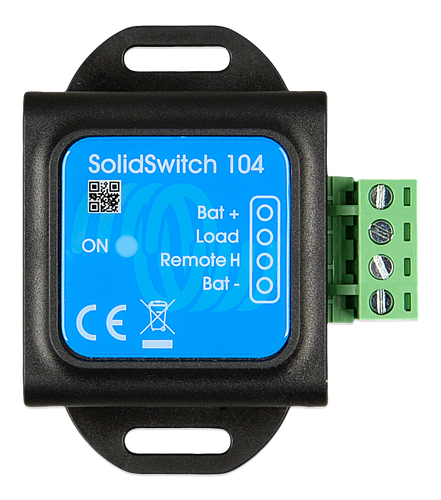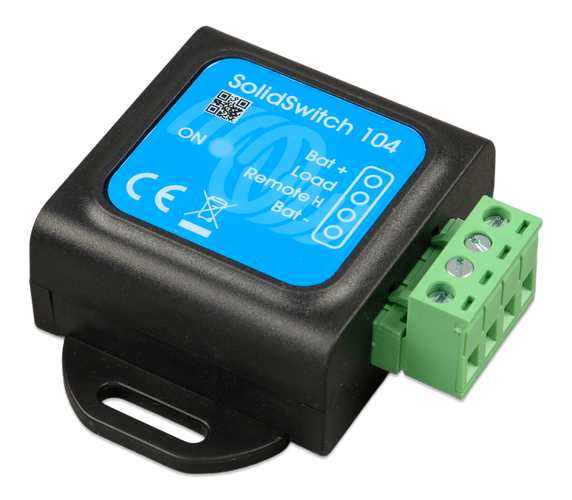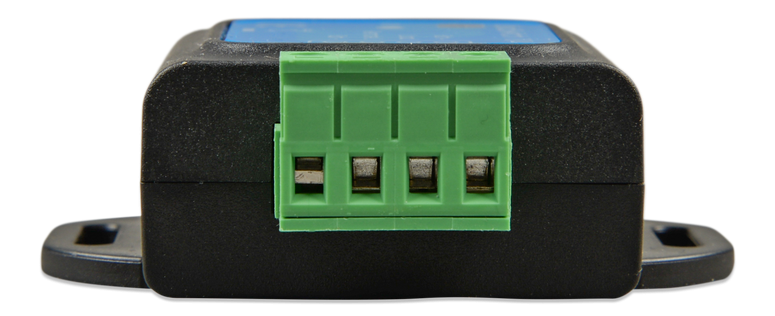Victron
Victron Solidswitch 104
Victron Solidswitch 104
Couldn't load pickup availability
The SolidSwitch 104 switches DC loads of up to 70V/4A and can be controlled by a low power digital
signal. It has three typical use cases:
-
Control an external alternator regulator, such as a Balmar or Mastervolt Alpha pro in a Victron
lithium system. -
Switch a DC load, such as a light. A low power control circuit, max current drawn will only be 100
μA, can then control a load of up to 4 Amps. -
Increase the number of chargers that can be wired to the ATC (allow-to-charge) output of a
Victron BMS.
What is it that makes the SolidSwitch 104 unique?
The feature making it such a usable switch is its low current draw. The SolidSwitch will draw 0.04 Ah a
month, while a small relay can easily take 10 Ah a month, or typically even 22 Ah (*).
That reduction by a factor of 250 is crucial when using it in a lithium system to connect and control the
alternator regulator: the control circuit will always be drawing its standby power. As well as when using it
to increase the number of chargers that can be wired to a BMS ATC contact. By using a SolidSwitch rather
than an ordinary relay, the parasitic load is reduced to the order of magnitude of the battery bank self
discharge.
Note that, even when the batteries are fully charged, the ATC output of the BMS will still be enabled. And
as such, control circuits such as a relay or in this case the SolidSwitch will be enabled and drawing power.
Even when the charger or alternator is not charging.
For this example, that means that when using a relay, the small relay draws 10Ah per month from the
battery bank, even when the engine isn’t running. While the SolidSwitch only draws 0,04Ah, which is most
likely far below the self-discharge of the batteries and thus neglectable.
(*) If for example a 12V 1A relay with a 400 Ohm coil is used, the current draw will be 30mA, or 21.6 Ah per
month.
Compatible Load types: The DC load can be resistive, capacitive or inductive (such as the coil of a high-power contactor).
Share








